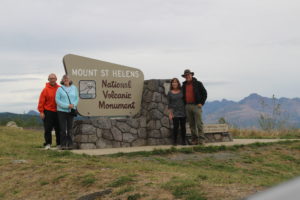 The day after we went to Mt. Rainier, we headed to Mount St Helens National Monument. The two mountains are very similar in size and composition, but their recent history makes them look very different. Mt. Rainier is a National Park in the Department of the Interior but Mount St Helens is administered by the National Forest Service in the Department of Agriculture.
The day after we went to Mt. Rainier, we headed to Mount St Helens National Monument. The two mountains are very similar in size and composition, but their recent history makes them look very different. Mt. Rainier is a National Park in the Department of the Interior but Mount St Helens is administered by the National Forest Service in the Department of Agriculture.
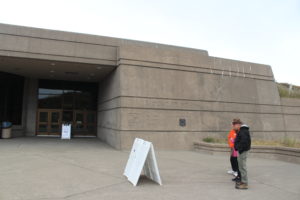 As you may know, Mount St Helens erupted on May 18, 1980. Earthquakes had alerted geologists to volcanic activity since March, so roads to the summit had been closed. People within the “danger zone” were urged to evacuate. Most did, but some chose to remain in their homes. Harry Truman, owner of the Spirit Lake Lodge, is probably the most famous. Because the eruption was predicted for so long, some people chose to ignore the predictions and camp in the area on a beautiful late spring day.
As you may know, Mount St Helens erupted on May 18, 1980. Earthquakes had alerted geologists to volcanic activity since March, so roads to the summit had been closed. People within the “danger zone” were urged to evacuate. Most did, but some chose to remain in their homes. Harry Truman, owner of the Spirit Lake Lodge, is probably the most famous. Because the eruption was predicted for so long, some people chose to ignore the predictions and camp in the area on a beautiful late spring day.
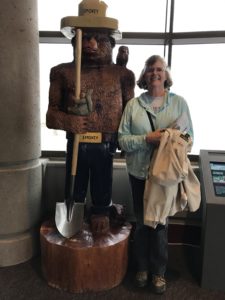 The eruption started at 8:30 in the morning with a portion of the mountain sliding down into Spirit Lake, immediately killing everyone in the vicinity. David Johnston, geologist on watch at the summit, had time to radio, “Vancouver, this is it!” before he died. The fissures created by the avalanche allowed steam from deep inside the mountain to release.
The eruption started at 8:30 in the morning with a portion of the mountain sliding down into Spirit Lake, immediately killing everyone in the vicinity. David Johnston, geologist on watch at the summit, had time to radio, “Vancouver, this is it!” before he died. The fissures created by the avalanche allowed steam from deep inside the mountain to release.
A pyroclastic flow of superheated air downed trees and cooked people who were 16 miles away from the summit. A huge cloud of ash fell over the area, suffocating people and animals. A lahar swept down the sides of the mountain and scoured the valleys of the North and South Forks of the Toutle river for 40 miles. It buried everything in its path in a steaming concrete mass 15 feet high.
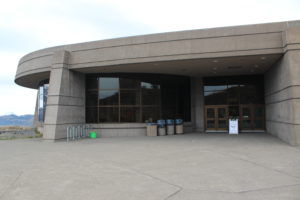 We drove up Mount St Helens on a cool, gray day. There are three places that claim to be the Visitors Center for the mountain. One is located in Seaquest State Park at the bottom of the mountain. One is privately owned and overlooks the Toutle River valley. We stopped there and took some pictures from the overlook but didn’t stay.
We drove up Mount St Helens on a cool, gray day. There are three places that claim to be the Visitors Center for the mountain. One is located in Seaquest State Park at the bottom of the mountain. One is privately owned and overlooks the Toutle River valley. We stopped there and took some pictures from the overlook but didn’t stay.
The real Visitors Center is at the new summit of Mount St Helens and staffed by Forest Service Rangers. This Visitors Center is a research, monitoring, and information center for the mountain. The day we visited there were several school groups.
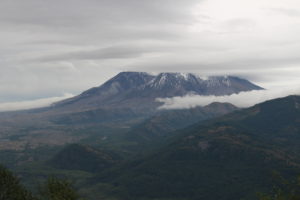 We listened to a ranger talk for a little while, looked at the exhibits, and then watched both of the movies. The first movie was about life returning to Mount St Helens after the explosion. The second movie was about the explosion itself. Both movies were very good. The highlight of the movies, however, is the screening room itself. At the end of each movie a picture of Mount St Helens before the explosion appears on the screen. As you look at it, the screen rises and a huge curtain parts to show Mount St Helens as it is now. The contrast is stark and fascinating.
We listened to a ranger talk for a little while, looked at the exhibits, and then watched both of the movies. The first movie was about life returning to Mount St Helens after the explosion. The second movie was about the explosion itself. Both movies were very good. The highlight of the movies, however, is the screening room itself. At the end of each movie a picture of Mount St Helens before the explosion appears on the screen. As you look at it, the screen rises and a huge curtain parts to show Mount St Helens as it is now. The contrast is stark and fascinating.
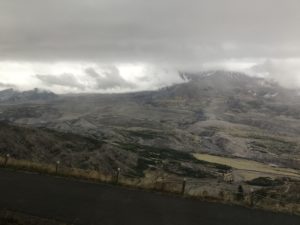 As soon as the curtain parted, people rushed to the giant observation window to look out. We could see the valley below (some elk standing beside the river) and the new peak of the mountain. Then we watched the second movie, and when the curtains parted again, all we could see was white clouds. In that short amount of time, the view was obscured.
As soon as the curtain parted, people rushed to the giant observation window to look out. We could see the valley below (some elk standing beside the river) and the new peak of the mountain. Then we watched the second movie, and when the curtains parted again, all we could see was white clouds. In that short amount of time, the view was obscured.
We spent some time looking around the bookstore and talking to the rangers. I found a lenticular bookmark that shows a before picture of Mount St Helens. When I tilt it, however, it shows an after picture of the mountain. I am inordinately pleased with it and look at it several times a day. I also purchased a book filled with first-hand accounts of victims and survivors of the explosion. “In the Path of Destruction” by Richard Waitt is fascinating.
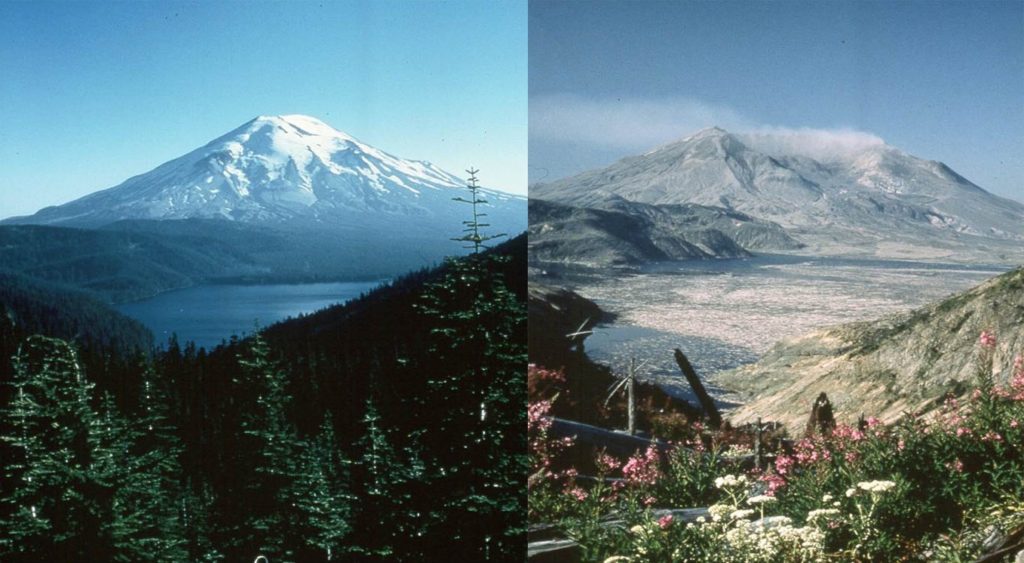
Even though we didn’t see much of Mount St Helens, I found the Visitors Center extremely well done. The movies were exceptional and the mountain framed in the window was stunning. I was especially fascinated by the first hand accounts. If I had to choose between Mount St Helens and Mt. Rainier, I would choose Mount St Helens every time.
Have you been there? What did you think?

Wow! I would have never guessed those were photos of the same mountain.
It was pretty impressive. We humans think we are so important and powerful, but we are nothing next to the forces of God’s creation.